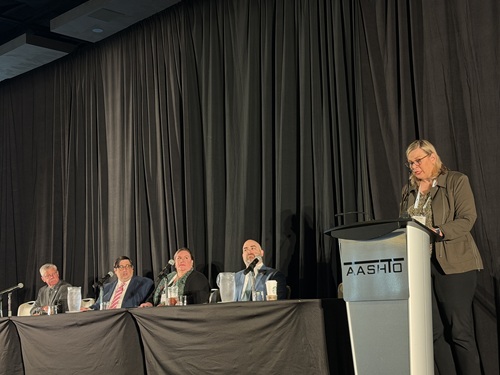At the American Association of State Highway and Transportation Officials 2025 Safety Summit and Peer Exchange, held October 28-30 in New Orleans, automaker and insurance industry representatives shared their thoughts on how to improve transportation safety in the United States.
[Above photo by AASHTO]
Moderated by Kristina Boardman – secretary of the Wisconsin Department of Transportation and chair of the AASHTO Committee on Safety – the session featured Garrett Eucalitto, commissioner of the Connecticut Department of Transportation and AASHTO’s 2024-2025 president; Craig Orlan, director of state and local government affairs for the American Honda Motor Co.; Liz Pulver, senior research program manager at State Farm Insurance; and Michael Hanson, director of the Minnesota Office of Highway Safety.
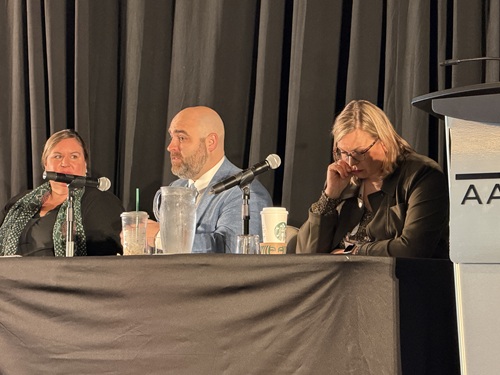
“This is an area where we need to engage with partners that are active in the safety space – and automakers have a key role to play in this area,” noted Eucalitto.
In that vein, Honda’s Orlan pointed to a pilot program with the Ohio Department of Transportation and others nearly two years ago, whereby Honda vehicles capture real-time road quality data and then share that information with Ohio DOT; allowing the agency to make faster and more targeted road improvements.
“It is about fixing potholes and roads faster, while identifying areas where better signage might be needed,” Orlan said.
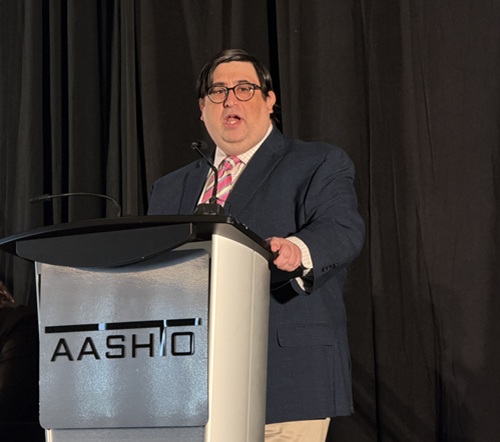
He also noted that Honda is seeking to partner with state departments of motor vehicles (DMVs) to help deliver supplemental recall notification to used vehicle owners.
“The DMVs are only place in all 50 states where everyone must go to register vehicles – and where we can engage with secondary vehicle market owners about recalls,” Orlan said.
“Seven states have adopted this model – Texas and California included – and we are looking to automate this [recall notice] process,” he added. “We are not looking to shift liability or responsibility here – we just need a partner to help identify owners of the affected vehicles so they can be made safe.”
State Farm’s Pulver added that insurance providers and state DOTs all share the same customers, users, and communities and thus are well positioned to work together.

“We are all in this together and we want all users to be safe. At the heart of our research efforts generating evidence-based solutions,” she explained.
“Because as we think about the safety culture – getting drivers to stay off the phone, not speed – we need to actively build a culture around those behaviors,” Pulver noted. “Safety has to go beyond the road – it impacts everything we do.”
And that is where the data insurance companies collect can help, noted Minnesota’s Hanson.
“The new frontier of data is how to harvest telematics; it is real-time and right now,” he pointed out. “When compared with historic data, it gives you a completely different look at things. It helps you understand and identify traffic anomalies. Another way it helps is by providing an in-depth look at what is going on at particular stretches of road – and what countermeasures could address particular safety issues. We are right at the beginning of the revolution of how we can use this data.”
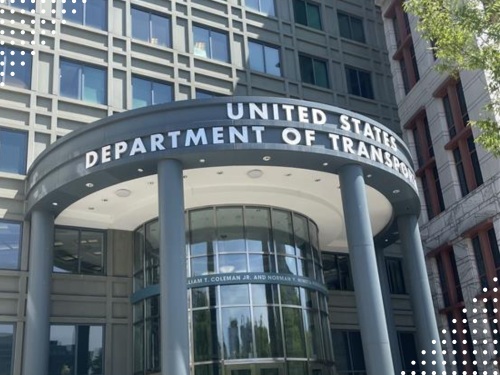 Top Stories
Top Stories
USDOT Makes $1.5B Worth of BUILD Grants Available
December 19, 2025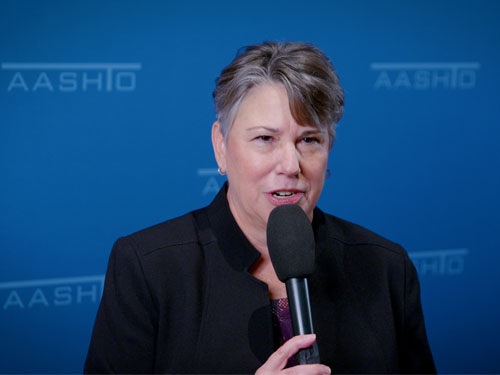 Top Stories
Top Stories
